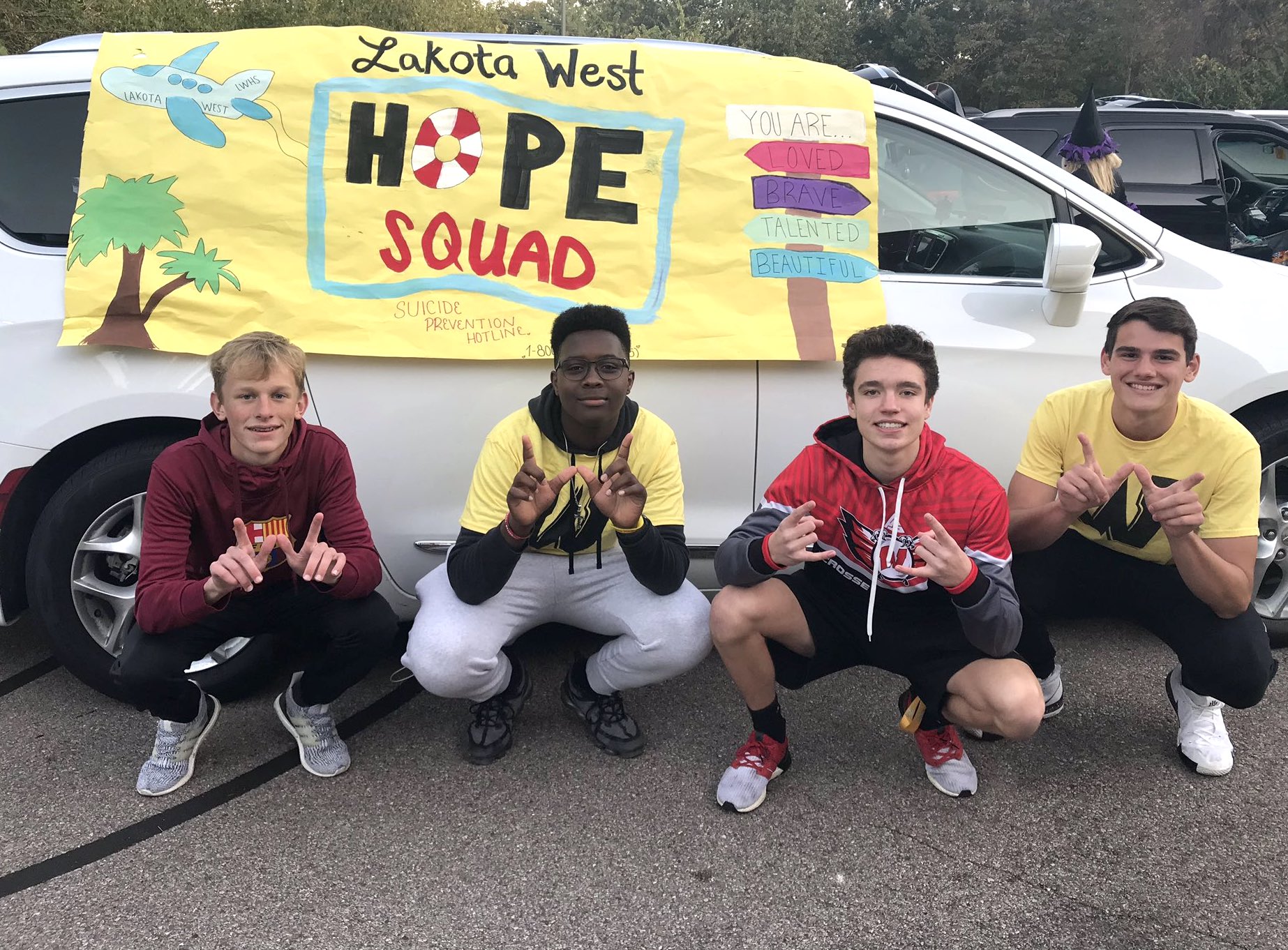When it comes to student stress and mental health, this school year has been worse than 2020-21, says Kevin Rohlfs, the principal of Bellevue West High School in the Omaha, Nebraska suburbs.
“Last year we had a honeymoon phase because kids were happy to back and people thought the pandemic would be done,” says Rohlfs, noting, in particular, a decline in disciplinary problems. “This year it’s been worse. Stress levels are a lot higher and kids are acting out because they’re struggling.”
Thankfully, he adds, students at the school formed a Hope Squad in 2017 to provide peer-to-support to classmates who are considering harming themselves or committing suicide. The district, Bellevue Public Schools, had been rocked by a number of suicides in the previous years and, after each incident, students wanted to know how they could help prevent future tragedies.
Part of a national network, the Hope Squad trains students on how to connect with young people in distress and then seek assistance from an adult. The student body chooses the squad’s members by listing the students whom they would turn to in a time of crisis.
Related story: Why LGBTQ youth still face a higher risk of suicide and self-harm
The club holds regular activities, such as an ugly sweater contest and setting up tables where students get information about coping with anxiety, depression and stress. Simply put, the Hope Squad saves lives, Rohlfs says. “The most important thing we do is teach kids to ask the hard questions to get students to open up and say they’re struggling,” he says. “I believe our students are more comfortable talking about these issues than they were four or five years, and that means our counselors are busier, but it’s helping our kids.”
Breaking a suicide cycle
The first element of the group’s three-step suicide prevention model is training all school staff in the “QPR method,” which stands for question, persuade refer,” says Gregory A. Hudnall, a former administrator who founded the national Hope Squad organization and serves as its executive director.
The second step is partnering with communities, including mayors, city councils, chambers of commerce and mental health agencies, among others, to understand the scope of the problem and provide support for each other.
The final step is establishing Hope Squads in individual schools. Approximately 1,100 schools how have chapters that have helped around 10,000 students access mental health care. “About 7 in 10 young people who take their lives tell a friend, but the friend doesn’t tell an adult,” Hudnall says. “Hope Squad breaks that cycle, breaks that silence and reduces stigma on campus.”
One surprise of the initial phase of COVID was a leveling off of suicide rates, which experts had expected would skyrocket, Hudnall says. “Families were staying home, kids were reconnecting with siblings and watching movies and having dinners together, kids weren’t getting bullied,” he says. “What we did see is depression, anxiety and cutting, and other behaviors go way up.”
This is now forcing students to wait weeks and even months to see a therapist as schools as communities are now beginning to see a rise in suicides and suicidal behavior, he says.
‘Building the resiliency muscle’
The conversation around suicide and emotional wellbeing has been destigmatized since Wisconsin’s Elmbrook Schools launched a Hope Squad, says Tanya L. Fredrich, the assistant superintendent of teaching and learning.
 A series of student suicides in 2015 sparked community-wide discussions about student mental health and resiliency. “Kids weren’t surprised their peers were struggling but parents had misconceptions about mental health and suicide ideations and they didn’t have good information about how to interact with someone having thoughts of harming themselves,” Fredrich says.
A series of student suicides in 2015 sparked community-wide discussions about student mental health and resiliency. “Kids weren’t surprised their peers were struggling but parents had misconceptions about mental health and suicide ideations and they didn’t have good information about how to interact with someone having thoughts of harming themselves,” Fredrich says.
The district chooses the Hope Squad as a solution because of widespread research that though shows students in distress are most likely to talk to their peers, kids are not equipped to handle the problem on their own, she says.
The training the comes along with the squad has dispelled the myth that talking about suicide can give students ideas about harming themselves. “We have destigmatized the conversation between families, students and staff around behavioral health,” she says. “We have more people willing to ask questions because they know they have a route to get somebody to support.”
The presence of the organization, along with an expansion of school-based therapy, is also helping the district confront rising anxiety, stress, depression and other issues students are dealing with this fall.
“We’re building the resiliency muscle in our kids,” Fredrich says. “We’re raising the next generation to have a different perspective about mental health.”









